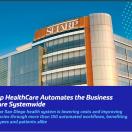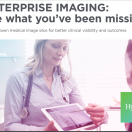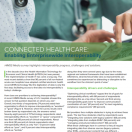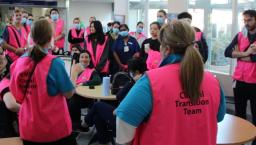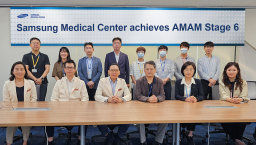How UNC Health Care achieved its 'one patient, one chart' vision

Photo: Jose Luis Pelaez/Blend Images
The growth of UNC Health and its acquisition of many hospitals and clinics created IT management complexity and resulted in lost time searching for data for both clinicians and staff. While UNC Health’s consolidation to an Epic EMR gave clinicians access to structured data, it did not address access to medical images, medical device reports, EKGs, clinical consult notes and more. That information was siloed in PACS and document management systems across numerous facilities. This created challenges for patient records lifecycle management, business continuity, and disaster recovery planning.
After reviewing multiple vendors, UNC Health chose Hyland for the ability to capture, index and unify access to documents, media and images for integrated use within the EMR, ERP, and HRIS workflows.
"On the clinical side, UNC eliminated silos of medical images stored in PACS at multiple facilities by implementing a single clinical image repository with Hyland’s Acuo vendor-neutral archive and enabled universal access within Epic workflow through the NilRead diagnostic viewer. We have eliminated nine PACS and three reporting systems," said Vineeta Khemani, director of Information Services Division Architecture and Clinical Systems at UNC Health. "This not only results in hard cost savings but also reduces annual support and enhancement costs."
UNC Health also stored and indexed EKGs, consult notes, and other unstructured patient documents through Hyland’s OnBase content services platform and delivered the documents within the patient context for use within the Epic EMR workflow.
Notable patient-centred benefits have also been attained. For example, the tight integration between the imaging system and the EMR means that DVDs no longer need to be burned in order to share images from one UNC Health facility to another. Instead, images are electronically available enterprise-wide, almost in real-time, which accelerates physician consults and reduces instances of unnecessary repeat imaging tests.
UNC Health further leveraged Hyland Healthcare's content services platform to improve operational efficiencies, expedite workflows, and reduce costs. UNC Health added document capture, machine learning classification, extraction of data and automated workflow to its enterprise resource planning space to improve its clean pass-through and invoice-processing rates.
UNC Health’s best practice uses of technology have supported their digital transformation and achievement of three Stage 7 HIMSS analytics domains, including the Electronic Medical Record Adoption Model, Outpatient Electronic Medical Record Adoption Model, and the Adoption Model for Analytics Maturity.
Read the full case study here.






